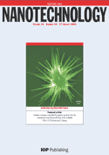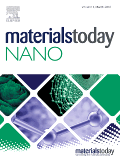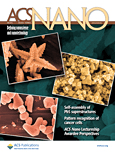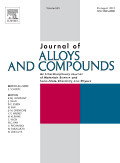
Nanomaterials
Scope & Guideline
Navigating the Cutting Edge of Nanomaterials Research
Introduction
Aims and Scopes
- Nanostructured Materials Synthesis:
Research on various synthesis techniques for nanomaterials, including chemical vapor deposition, sol-gel methods, and green synthesis approaches, emphasizing scalability and efficiency. - Characterization Techniques:
Utilization of advanced characterization techniques such as electron microscopy, X-ray diffraction, and spectroscopy to understand the structural, optical, and electrical properties of nanomaterials. - Applications in Photonics and Electronics:
Exploration of the use of nanomaterials in photonic devices, solar cells, sensors, and transistors, focusing on improving performance and efficiency. - Environmental and Biocompatibility Assessments:
Studies on the environmental impact of nanomaterials, including their toxicity, bioaccumulation, and potential applications in bioremediation and drug delivery systems. - Energy Storage and Conversion:
Research on the application of nanomaterials in energy storage systems such as batteries and supercapacitors, as well as their role in catalysis for energy conversion processes. - Nanomedicine and Drug Delivery:
Investigation into the use of nanomaterials for targeted drug delivery systems, imaging, and therapeutic applications in cancer treatment and other diseases.
Trending and Emerging
- Sustainable and Green Nanomaterials:
There is a growing focus on developing eco-friendly synthesis methods for nanomaterials, utilizing renewable resources and minimizing environmental impact, reflecting a shift towards sustainability in nanotechnology. - Advanced Characterization Techniques:
Emerging methodologies for characterizing nanomaterials, such as in situ techniques and machine learning approaches for data analysis, are becoming increasingly popular, enhancing the understanding of material properties at the nanoscale. - Integration of Nanomaterials in Smart Technologies:
Research is trending towards the integration of nanomaterials in smart devices, including sensors, actuators, and energy harvesting systems, highlighting their potential in the Internet of Things (IoT) and wearable technologies. - Nanomaterials for Biomedical Applications:
A significant increase in studies focusing on the use of nanomaterials for drug delivery, imaging, and therapeutic applications, particularly in cancer treatment, is evident as researchers explore their potential in personalized medicine. - Hybrid and Composite Nanomaterials:
There is a strong trend towards developing hybrid and composite nanomaterials that combine different materials to achieve enhanced properties and functionalities, catering to diverse applications. - Nanomaterials for Energy Applications:
Research on the use of nanomaterials in energy applications, particularly in batteries, supercapacitors, and photocatalysis, is gaining momentum, focusing on efficiency improvements and novel energy solutions.
Declining or Waning
- Traditional Nanomaterials:
There has been a noticeable decrease in publications centered around conventional nanomaterials (like basic metal or oxide nanoparticles) as researchers increasingly explore more complex and multifunctional materials. - Nanoparticle Toxicology Studies:
Research specifically focusing on the toxicological effects of nanoparticles has diminished, likely due to the maturation of the field and a shift towards more applied studies involving nanomaterials in real-world applications. - Basic Synthesis Methodologies:
Papers primarily discussing basic synthesis methods without innovative applications or modifications are less frequent, as the field moves towards application-driven research. - Environmental Impact Studies:
The number of studies solely dedicated to the environmental impacts of nanomaterials has waned, with a shift towards integrated studies that combine toxicity with applications. - Single Application Focus:
Research focusing on a single application of nanomaterials without exploring their multifunctionality is becoming less common, as the trend favors multifunctional and hybrid approaches.
Similar Journals

JOURNAL OF MATERIALS SCIENCE
Advancing the Frontiers of Materials InnovationJOURNAL OF MATERIALS SCIENCE, published by SPRINGER, stands as a highly regarded periodical in the field of materials science, delivering impactful research since its inception in 1966. With an impressive Q1 ranking in both Mechanical Engineering and Mechanics of Materials, alongside strong Q2 positions in Ceramics, Composites, and General Materials Science, this journal serves as a pivotal resource for scholars and practitioners alike. It offers insightful contributions that span a diverse range of topics, from emerging materials to advanced applications in engineering. With a robust Scopus ranking reflecting its global influence—ranking 91 out of 672 in Mechanical Engineering and 63 out of 398 in Mechanics of Materials—the JOURNAL OF MATERIALS SCIENCE maintains an essential role in advancing the understanding and innovation within the discipline. Researchers, professionals, and students are encouraged to access this esteemed journal to keep abreast of groundbreaking findings and methodologies that shape the future of materials science.

ADVANCED FUNCTIONAL MATERIALS
Exploring New Frontiers in Materials ScienceADVANCED FUNCTIONAL MATERIALS is a leading journal published by WILEY-V C H VERLAG GMBH, prominently recognized in the fields of biomaterials, chemistry, condensed matter physics, and materials science. With an impressive impact factor and a distinguished position in the Q1 quartile across multiple categories including nanoscience and nanotechnology, this journal serves as a vital platform for researchers and professionals committed to innovating in functional materials. Since its inception in 2000, ADVANCED FUNCTIONAL MATERIALS has published high-quality peer-reviewed articles that push the boundaries of materials science, exploring new frontiers in electronic, optical, and magnetic materials. The journal's dedication to open access ensures that its groundbreaking findings are readily available to a global audience, fostering collaboration and knowledge-sharing among scholars and practitioners in the field. For those seeking to stay at the forefront of materials research, ADVANCED FUNCTIONAL MATERIALS is an essential resource.

NANOTECHNOLOGY
Shaping the Future with Cutting-edge Nanotechnology Research.NANOTECHNOLOGY is a premier academic journal published by IOP Publishing Ltd, focusing on cutting-edge advancements in the interdisciplinary field of nanoscience and nanotechnology. With a strong emphasis on research that bridges biology, chemistry, engineering, and materials science, this journal presents high-quality, peer-reviewed articles that cater to the diverse interests of researchers, professionals, and students alike. NANOTECHNOLOGY boasts an impressive ISSN: 0957-4484 and E-ISSN: 1361-6528, and holds a notable position within Scopus, ranked in the second quartile (Q2) across multiple categories including Bioengineering and Mechanical Engineering, underscoring its vital role in advancing the field. The journal's impact is further highlighted by its robust rankings, making it essential reading for those looking to stay at the forefront of nanotechnology research. Commencing in 1990 and with publication extending through to 2024, NANOTECHNOLOGY provides a unique platform for disseminating significant findings and innovative methodologies while fostering collaborations across various scientific disciplines. In a rapidly evolving technological landscape, this journal not only enhances academic discourse but also contributes to the practical applications of nanotechnology in real-world scenarios.

RUSSIAN JOURNAL OF INORGANIC CHEMISTRY
Connecting Theory and Application in Inorganic ChemistryThe Russian Journal of Inorganic Chemistry is a distinguished publication that delves into the fundamental and applied aspects of inorganic chemistry. Published by MAIK Nauka/Interperiodica/Springer, this journal has established itself as a vital resource for researchers, professionals, and students alike, contributing significantly to the fields of Inorganic Chemistry, Materials Science, and Physical and Theoretical Chemistry. With an ISSN of 0036-0236 and an E-ISSN of 1531-8613, the journal is indexed for easy access and citation. Though the journal currently operates under a subscription model, its commitment to disseminating high-quality research and fostering scientific discourse remains steadfast. The journal has been maintaining a consistent record since its inception, and its positioning in the Q3 quartile across various chemistry categories in 2023 underscores its relevance in the academic community. As it continues through its converged years from 1996 to 2024, the Russian Journal of Inorganic Chemistry plays a pivotal role in enhancing the understanding and advancement of inorganic chemistry, making it an indispensable tool for anyone engaged in this dynamic field.

ACS Materials Au
Advancing Innovations in Materials EngineeringACS Materials Au, published by the American Chemical Society, is a premier open-access journal that has been at the forefront of materials science since its inception in 2021. With an ISSN of 2694-2461, this journal encompasses an expansive range of topics including biomaterials, electronic, optical and magnetic materials, materials chemistry, and polymers and plastics, consistently achieving Q1 rankings in these categories for 2023. The journal is based in the United States and operates from the AMS's headquarters in Washington, DC, offering significant visibility and a robust platform for researchers. The journal's commitment to open access ensures wide dissemination of groundbreaking research, enabling a diverse audience—including researchers, professionals, and students—to engage with the latest advancements in materials science. With an encouraging impact factor and a focus on novel materials and innovative applications, ACS Materials Au stands as a vital resource for anyone devoted to understanding and advancing the frontiers of materials engineering and science.

Materials Today Nano
Leading the Charge in Interdisciplinary Nano-Materials InnovationMaterials Today Nano, published by Elsevier, is a premier academic journal dedicated to the forefront of nano-materials research, encompassing innovations and advancements in biomaterials, condensed matter physics, electronic, optical, and magnetic materials, as well as materials chemistry. With an impressive Q1 ranking across multiple categories, including biomaterials and materials chemistry, this journal serves as a essential platform for researchers, professionals, and students aiming to contribute to and stay informed on cutting-edge developments that push the boundaries of materials science. Its open access model allows for wider dissemination of high-impact findings, ensuring that the research reaches a global audience. Operating from the United Kingdom, Materials Today Nano plays a vital role in fostering interdisciplinary collaboration and advancing scientific understanding in this rapidly evolving field.

ACS Nano
Elevating Engineering through Nanoscience ExcellenceACS Nano, published by the American Chemical Society, stands as a prestigious journal in the domains of Engineering, Materials Science, Nanoscience, and Physics. With an exceptional impact factor reflecting its standing as a Q1 category journal in multiple disciplines, it plays a pivotal role in disseminating groundbreaking research from 2007 to 2024. Known for its rigorous peer-review process, the journal boasts impressive Scopus rankings—positioned at #1 in General Engineering and #6 in General Physics and Astronomy—placing it among the top 1% of journals in its field. Although it is not an open-access publication, ACS Nano provides a wealth of knowledge that is essential for advancing the development of nanotechnology and its applications across various industries. Researchers, professionals, and students alike will find in its pages a trove of innovative studies and insights that drive the future of materials science and engineering.

Journal of Ovonic Research
Bridging Theory and Application in Material Technologies.Journal of Ovonic Research is a distinguished publication dedicated to advancing the fields of electronic, optical, and magnetic materials. Published by VIRTUAL CO PHYSICS SRL, this journal offers a platform for researchers to share innovative findings and developments that push the boundaries of technology and materials science. With an ISSN of 1842-2403 and an E-ISSN of 1584-9953, it provides an important service to the academic community, particularly within Romania and beyond. Despite its recent inception in 2011, the journal has gained traction in the academic landscape, reflecting a Q4 quartile ranking in crucial categories such as Electronic, Optical and Magnetic Materials, as well as in Physics and Astronomy. The Scopus rankings further underscore its positioning, ranking within the 25th to 37th percentile across various disciplines, making it a valuable resource for professionals and students alike. Although the journal currently operates on a non-open access basis, it remains committed to exploring the latest advancements in materials science, encouraging interdisciplinary collaboration and fostering a deeper understanding of surface, coating, and film technologies. As the field evolves, Journal of Ovonic Research stands as a beacon for scholarly communication, bridging the gap between research and practical application.

FULLERENES NANOTUBES AND CARBON NANOSTRUCTURES
Innovating the Future with Carbon-Based ResearchFULLERENES NANOTUBES AND CARBON NANOSTRUCTURES, published by Taylor & Francis Inc, stands at the forefront of research in the fields of nanotechnology, materials science, and organic chemistry. With an ISSN of 1536-383X and an E-ISSN of 1536-4046, this journal offers a critical platform for disseminating significant findings related to carbon-based nanostructures, materials characterization, and their innovative applications. Recognized for its scholarly impact, the journal enjoys a Q2 ranking in several fields, including Atomic and Molecular Physics, Materials Science, and Organic Chemistry, reflecting its commitment to quality research. Since its inception in 2002, it has maintained a rigorous publication standard and provides open access options, enabling a diverse audience, from researchers to industry professionals, to engage with the latest advancements. The journal's comprehensive scope across converged years until 2024 emphasizes its pivotal role in fostering knowledge in the rapidly evolving realm of nanoscience and nanotechnology. Researchers and practitioners alike are encouraged to explore the cutting-edge research showcased in this vital resource.

Journal of Alloys and Compounds
Exploring Breakthroughs in Metallurgy and Materials ScienceJournal of Alloys and Compounds, published by Elsevier Science SA, stands at the forefront of materials research, focusing on the properties, applications, and innovations within alloys and compounds. With an impressive impact factor and prestigious rankings placing it in the Q1 quartile across multiple related categories—including Materials Chemistry, Mechanical Engineering, and Mechanics of Materials—this journal is recognized for its significant contributions to the field. Researchers and professionals engaged in metallurgy, materials science, and engineering will find it a critical resource that encompasses groundbreaking studies, insightful reviews, and essential findings. The journal has a strong influence, as evidenced by its Scopus rankings—ranking 14th in Metals and Alloys and 28th in Mechanics of Materials, indicating a robust global impact. As it continues to publish cutting-edge research from 1991 to 2024, the Journal of Alloys and Compounds serves as a vital platform for the exchange of knowledge, thereby advancing our understanding of complex materials and fostering innovation in diverse applications.